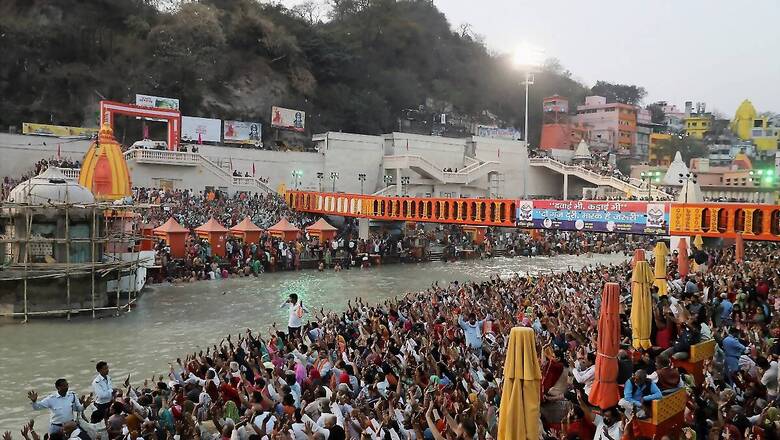
views
The second wave of the Covid-19 pandemic has been deeply painful. Although the nation as a whole is waging a heroic battle against the deadly virus, yet it is also true that a large number of families have suffered personal losses and emotional distress. It is natural therefore to look for causes or reasons that may have caused or contributed to the suffering. The just concluded Maha Kumbh Mela in Haridwar has become an easy target to pin all blame on. But is it accurate to do so? Let us look at some facts.
The Maha Kumbh Mela is a millennia old religious and cultural gathering for crores of devotees. Although the Mela is normally held at an interval of twelve years, yet the final decision on date and time is taken by saints and seers based on astrological science. Accordingly, it was decided that the Haridwar Maha Kumbh will be held in 2021.
Religious and cultural gatherings that invoke devotion of millions have a special place in society. In Germany, for example, Chancellor Angela Merkel reversed her decision to enforce a lockdown to accommodate the Easter gatherings. In India, however, the saints took the opposite view. The traditional period of Kumbh in Haridwar is four months – from January to April and this has been the case in all previous Maha Kumbhs. However, owing to the pandemic situation this year, the saints themselves decided to curtail the period to just one month – from 1st April to 30th April. This was done proactively at a time when the first wave had almost totally subsided, the total cases were in the 10,000 range and experts were predicting there would be no second wave. Furthermore, when the situation so necessitated in April, the Mela was further curtailed on the appeal of Hon’ble Prime Minister.
For the Mela duration, the government set strict protocols to monitor and contain any spread of the virus. Registration of all pilgrims was made mandatory, and a negative RT-PCR test taken in the previous 72 hours was also made compulsory for entry. More than 150 fixed and mobile sanitisation points were established. Almost 2,000 volunteers were deployed to encourage Covid-appropriate behaviour among the devotees. All front-line workers engaged in Kumbh activity were vaccinated and more than 2.18 lakh doses were utilized for this purpose. Strict travel guidelines were enforced to ensure no overcrowding took place. Multiple random Covid tests were performed during the Mela area. Nearly 10 lakh such tests were done and the positivity ratio was just around 1.49%.
The strict guidelines, strong enforcement and efforts by the saints and the government ensured that the attendance in the Mela was a bare fraction of the usual attendance. As an example, in the Shahi Snan on Maha Sankranti on 14th April this year, just 13.5 lakh devotees took the holy dip. Equivalent numbers in the previous Shahi Snan in 2010 was 1.8 crore, over 13 times higher.
In the previous Maha Kumbh in Haridwar in 2010, the total attendance was more than 4 crore devotees. The Ardh Kumbh in Prayag in 2019 attracted 24 crore devotees. In contrast, just 35 lakh people attended the Haridwar 2021 Kumbh, reaffirming the commitment of the entire Hindu society to limit this sacred, time-immemorial ritual to the bare minimum in challenging times.
From a scientific, data-driven perspective as well, if we analyse the spread of Covid cases through the Mela period, it clearly emerges that the Kumbh did not play a role in escalating the second wave. The map below (Fig. 01) traces districts reporting more than 100 daily cases over the last four months. February and March maps clearly show how the second wave originated from Western India, to steadily spread and engulf the entire country.
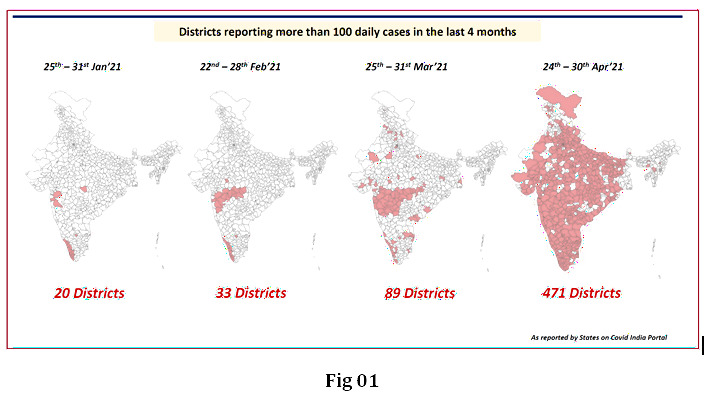
Then let’s specifically analyse Covid positivity during the Kumbh Mela period itself. Comparing Haridwar and Dehradun with a range of other equivalent districts with tier-2 cities across all regions of India clearly establishes how the second wave was already ravaging other parts of the country much before the Kumbh even started.
To cite a few examples, take the cities of Nagpur (Fig. 02) and Nashik (Fig. 03) in the West, Raipur (Fig 04) in the East and Vishakhapatnam (Fig 05) in the South.
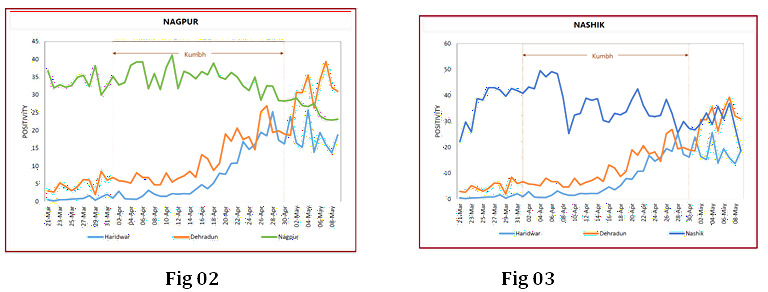
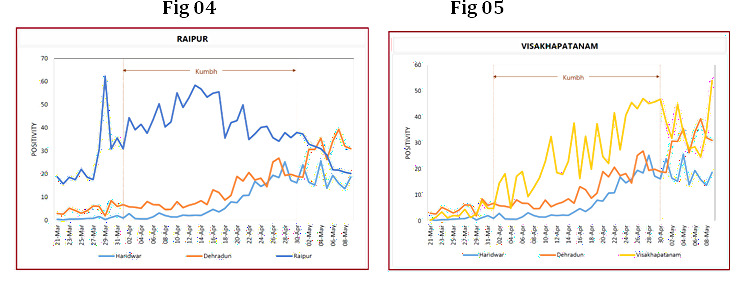
At the same time, distant and disconnected districts all the way down in the South saw positivity trends similar to Haridwar and Dehradun. Take the examples of Mysuru (Fig. 06), Kozhikode (Fig. 07) and Coimbatore (Fig. 08).
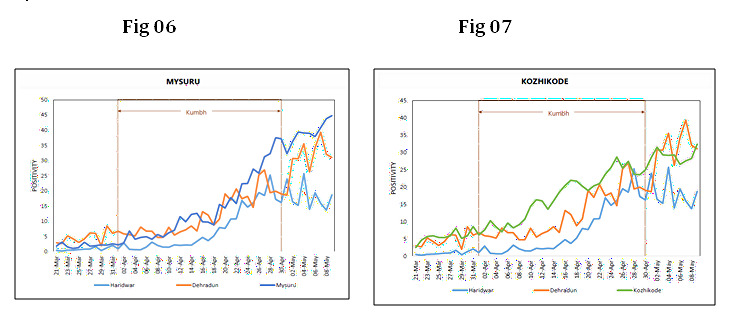
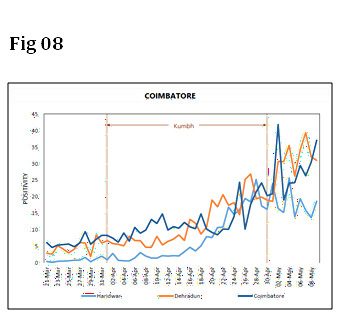
As saints, we normally refrain ourselves from writing in the public domain on issues of policy and current discourse, but the way the discourse has been systematically vitiated in the last few weeks has compelled me to write this. The way the Kumbh Mela has been maligned has deeply pained not just me but crores of ordinary Hindus. Our most revered traditions have become part of a political tug-of-war, and that too, as part of some pre-planned tool-kit? What crime have the saints, seers and crores of ordinary Hindus committed that they have to be so shamed and humiliated in their own country?
In the Bhagavad Gita, Prabhu Krishna says तानहं द्विषतः क्रूरान्संसारेषु नराधमान्। क्षिपाम्यजस्रमशुभानासुरीष्वेव योनिषु।।
We, as ordinary mortals, will pray to God that he may forgive those who indulged in this heartless act of cruelty. May they also have the wisdom to introspect and reflect on their own conduct.
Read all the Latest News, Breaking News and Coronavirus News here. Follow us on Facebook, Twitter and Telegram.













Comments
0 comment